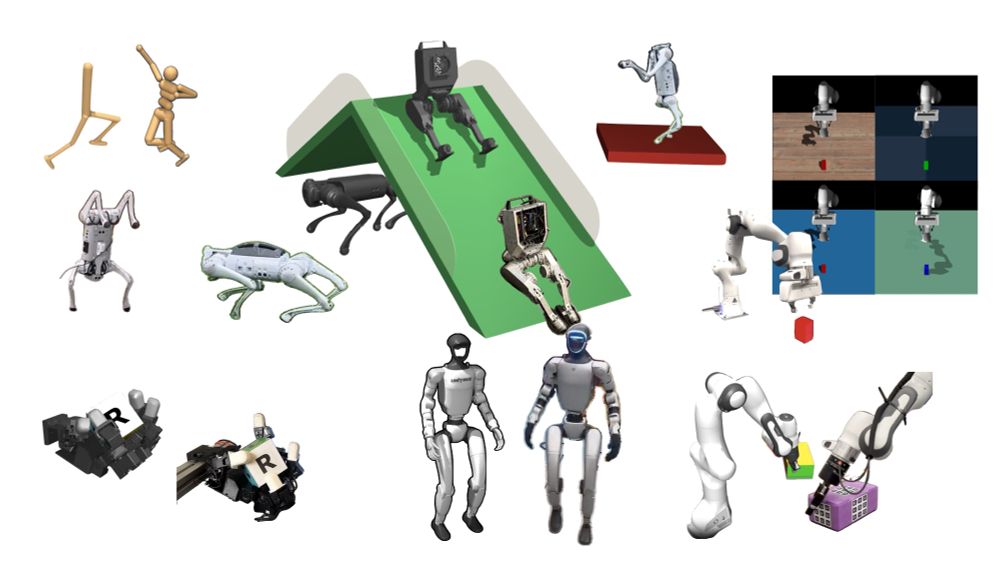
Open-source/open science advocate
Maintainer of torchrl / tensordict / leanrl
Former MD - Neuroscience PhD
https://github.com/vmoens

Using these, we got >6x speed-ups compared to the original CleanRL implementations.
github.com/pytorch-labs...

coexistence-project.github.io/RouteRL/
Looks pretty cool!
coexistence-project.github.io/RouteRL/
Looks pretty cool!
In this blog post, let's discover common formats for storing an AI model.
huggingface.co/blog/ngxson/...

In this blog post, let's discover common formats for storing an AI model.
huggingface.co/blog/ngxson/...
MLGym relies on a gym environment that wraps a docker image. Each env has a task specified as a YAML file, telling in plain english what you want your LLM to achieve
👇

MLGym relies on a gym environment that wraps a docker image. Each env has a task specified as a YAML file, telling in plain english what you want your LLM to achieve
👇
At least in RL, anytime I see an "Agent" class it's meant to be a "whatever doesn't fit in any other bucket in my codebase".
At least in RL, anytime I see an "Agent" class it's meant to be a "whatever doesn't fit in any other bucket in my codebase".
I’ve never really understood PyTorch.
I’ve never really understood PyTorch.
Combining MuJoCo’s rich and thriving ecosystem, massively parallel GPU-accelerated simulation, and real-world results across a diverse range of robot platforms: quadrupeds, humanoids, dexterous hands, and arms.
Get started today: pip install playground

Combining MuJoCo’s rich and thriving ecosystem, massively parallel GPU-accelerated simulation, and real-world results across a diverse range of robot platforms: quadrupeds, humanoids, dexterous hands, and arms.
Get started today: pip install playground
I've always been interested in the epistemology of controversial scientific concepts such as emergence or consciousness. Vaguely defined concepts (or diverging definitions) are often at the root of many pointless debates.
Kudos on clarifying things!
www.preposterousuniverse.com/podcast/2024...
I've always been interested in the epistemology of controversial scientific concepts such as emergence or consciousness. Vaguely defined concepts (or diverging definitions) are often at the root of many pointless debates.
Kudos on clarifying things!
- eat healthier
- exercise more
- no more “is all you need” papers
- eat healthier
- exercise more
- no more “is all you need” papers
blog post with corrected open source benchmarks & details: stoneztao.substack.com/p/the-new-hy...


blog post with corrected open source benchmarks & details: stoneztao.substack.com/p/the-new-hy...
What does this `Human-computer` sticker seen at neurips hide?

What does this `Human-computer` sticker seen at neurips hide?
It's a one-of-its-kind unsupervised RL project, and it comes with a demo that is SO fun to play with!
metamotivo.metademolab.com
(for the record, they use compile and cudagraphs -> github.com/facebookrese...)
It's a one-of-its-kind unsupervised RL project, and it comes with a demo that is SO fun to play with!
metamotivo.metademolab.com
(for the record, they use compile and cudagraphs -> github.com/facebookrese...)

pytorch.org/blog/torchco...
github.com/pytorch/torc...

pytorch.org/blog/torchco...
github.com/pytorch/torc...

*no, I'm not Santa!

*no, I'm not Santa!
www.metacareers.com/jobs/6044463...
You’ll be working with @soumithchintala.bsky.social, @marksaroufim.bsky.social and myself

www.metacareers.com/jobs/6044463...
You’ll be working with @soumithchintala.bsky.social, @marksaroufim.bsky.social and myself
- Those who know what they would have done differently had they known what a pain it was going to be
- Those who change things accordingly and ruin everyone's life forever
- Those who know what they would have done differently had they known what a pain it was going to be
- Those who change things accordingly and ruin everyone's life forever



